Food spices are one of the most powerful tools in any cook’s kitchen. From transforming a bland dish into something bold and vibrant to enhancing the natural flavor of ingredients, spices allow you to travel the world without ever leaving your stove. Whether you’re new to cooking or looking to expand your spice rack, this guide will introduce you to the fundamentals of using spices, with tips based on regions, meats, and ingredients.
What Are Food Spices?
Food spices are the dried parts of plants, including seeds, roots, bark, berries, and flower buds, that are used to flavor, preserve, and color food. Unlike herbs, which are typically derived from fresh or dried leaves, spices deliver concentrated, robust flavors and are often used in smaller quantities. They can add warmth, sweetness, bitterness, heat, or depth to dishes, making them a cornerstone of global cuisine.
If you’re aiming to build a smart, flexible kitchen, start with the basics! Our Pantry Essentials for New Cooks guide is the perfect resource for stocking your spice rack, and much more.
Now, let’s take a closer look at some of the most popular food spices, organized by the part of the plant they come from:
1. Cumin (Seeds)
Cumin seeds are small, boat-shaped seeds with a warm, earthy aroma and slightly nutty flavor. Used extensively in Indian, Middle Eastern, Mexican, and North African cuisines, cumin adds depth to curries, rice dishes, chili, and spice blends like garam masala and taco seasoning. Ground cumin has a more intense flavor and is perfect for seasoning meats and legumes.
2. Cinnamon (Bark)
Cinnamon is made from the inner bark of cinnamon trees. Its sweet, woody, and slightly spicy flavor makes it a versatile spice, essential in both sweet and savory dishes. While commonly associated with desserts and baking, cinnamon is also used in savory recipes like Moroccan tagines and Indian biryanis. There are two main types: Ceylon (true cinnamon) and Cassia (stronger and more common).
3. Cloves (Flower Buds)
Cloves are dried flower buds with a pungent, sweet, and warming flavor. Just a few cloves can transform a dish, which is why they’re often used sparingly. Popular in spice blends (like Chinese five-spice or pumpkin pie spice), they’re used in both savory dishes like spiced rice or baked hams and sweet treats like mulled wine or apple compote. They’re also commonly used whole in slow-cooked stews and broths.
4. Nutmeg (Seed)
Nutmeg comes from the seed of the nutmeg fruit and has a sweet, slightly nutty flavor with hints of spice and warmth. Freshly grated nutmeg is especially aromatic. It pairs beautifully with creamy dishes like béchamel sauce, potato gratins, custards, and baked goods. In savory cooking, a pinch of nutmeg enhances spinach, squash, and cheese-based recipes.
5. Paprika (Fruit/Peppers)
Paprika is made by grinding dried sweet or hot red peppers into a fine powder. It can range from sweet and mild to hot and smoky, depending on the variety. Originating from Hungary and Spain, paprika is widely used in rubs, stews, soups, and sauces. Smoked paprika (pimentón) is a key ingredient in Spanish cuisine, while sweet paprika is common in Hungarian goulash and deviled eggs.
These five food spices represent just a fraction of the spice world, but they demonstrate how spices can dramatically shift the tone and aroma of a dish. Learning to use them confidently is a great step toward building flavor like a pro.
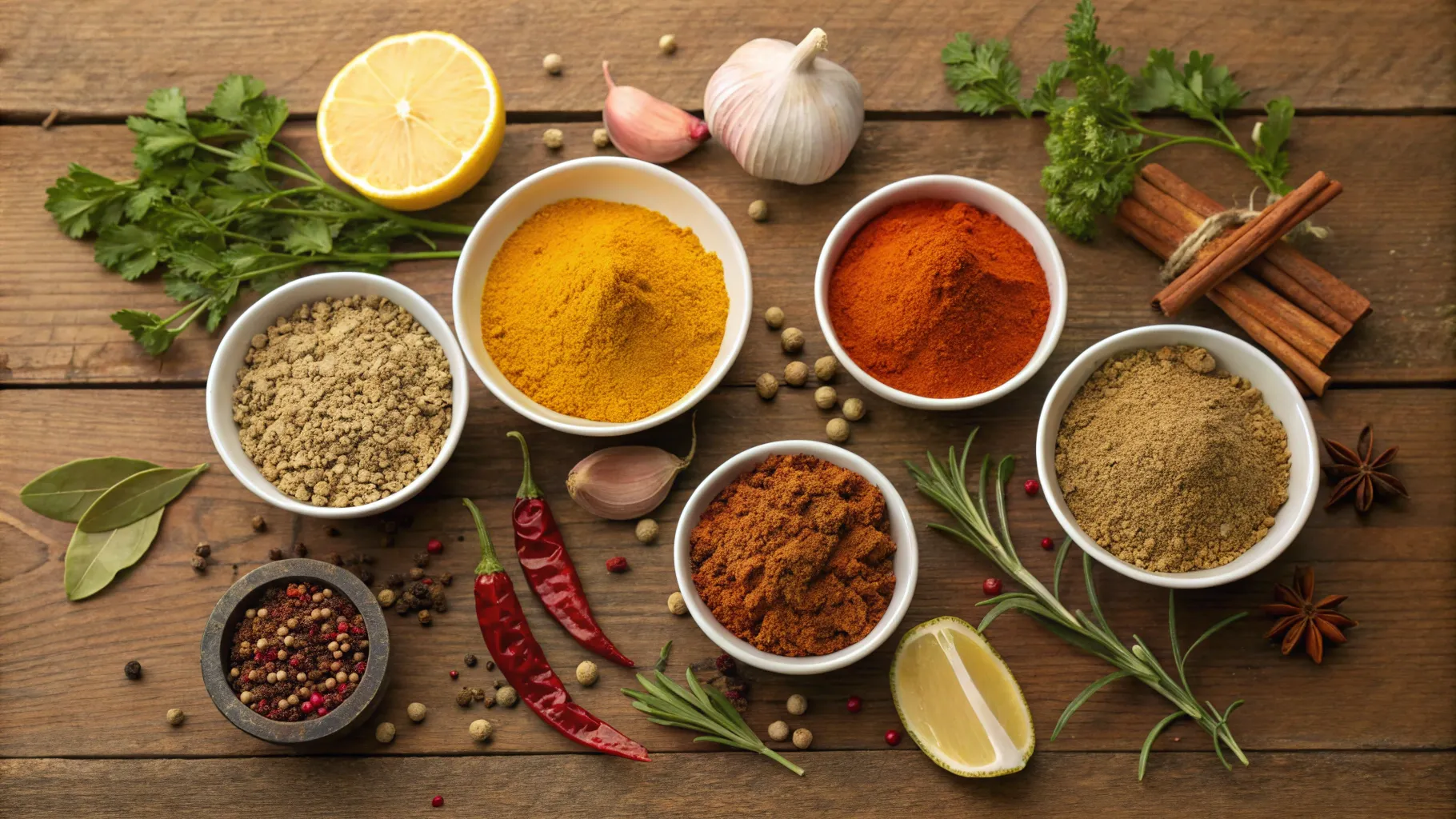
Types of Food Spices by Region
1. Middle Eastern Spices
Middle Eastern cuisine is rich in warm, earthy, and aromatic food spices.
- Cumin: Earthy and nutty, used in lamb, chickpeas, and rice dishes.
- Coriander: Citrus-like and slightly sweet, great in tagines and falafel.
- Sumac: Tart and fruity, often sprinkled on grilled meats and salads.
- Za’atar: A blend of thyme, sumac, and sesame seeds.
2. Indian Spices
Indian cooking is known for its complexity and layered spice blends.
- Turmeric: Earthy and bitter, used in curries, lentils, and rice.
- Garam Masala: A warming mix of cardamom, cloves, cumin, and cinnamon.
- Fenugreek: Slightly bitter, used in dals and pickles.
- Mustard Seeds: Add a nutty crunch when popped in oil.
3. Latin American Spices
These food spices add heat and bold flavor to meats, beans, and stews.
- Chili Powder: A mix of ground chilies, cumin, garlic powder.
- Paprika: Sweet or smoky, used in salsas and rubs.
- Oregano (Mexican): More robust than Mediterranean oregano.
- Cumin: Heavily used in taco seasoning and chili.
4. East & Southeast Asian Spices
Asian cuisines rely on aromatic food spices to balance sweetness, saltiness, and umami.
- Ginger (dried/ground): Pungent and peppery.
- Star Anise: Licorice-like and sweet, used in Chinese five-spice.
- Sichuan Peppercorns: Numbing and citrusy heat.
- Cinnamon (Cassia): Used in Vietnamese pho broth.
5. European & Mediterranean Spices
These add depth to hearty meats, stews, and pasta.
- Black Pepper: Used across almost all savory dishes.
- Nutmeg: Adds warm sweetness to cream sauces and spinach.
- Caraway Seeds: Common in German and Eastern European baking.
- Fennel Seeds: Lightly sweet and aromatic, often used in Italian sausage.
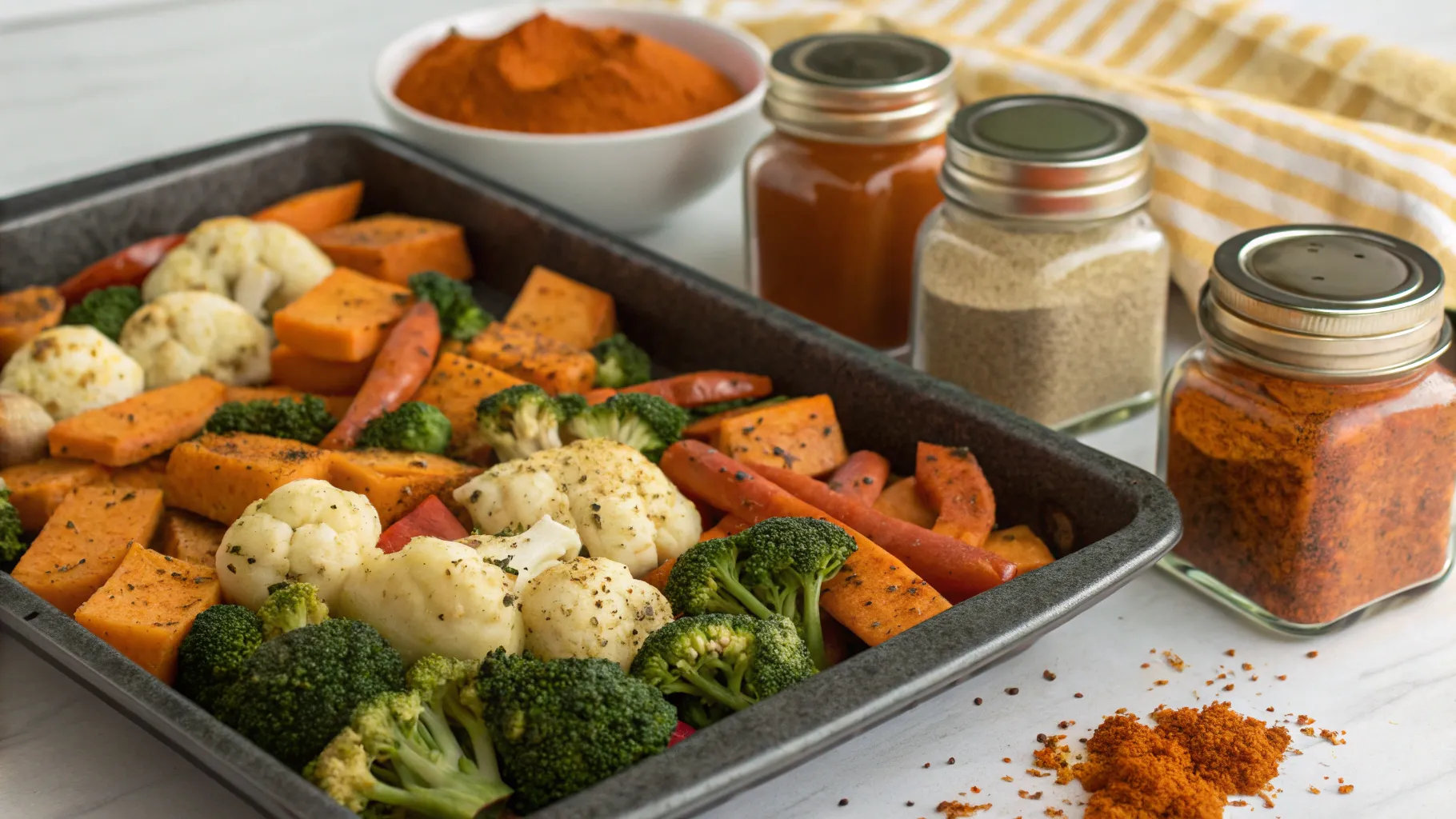
Pairing Spices with Meats
Using the right food spices for the right meat can elevate your dish from basic to bold. Different cuts and proteins have their own natural flavor profiles, and spices can either enhance or balance those characteristics. Below is a breakdown of the most effective spice pairings for common meats, along with notes on how to use them.
1. Chicken
Chicken is a blank canvas that takes well to a wide range of food spices. Whether grilled, roasted, or stewed, it pairs beautifully with both delicate and bold seasonings.
- Paprika (sweet or smoked):
Adds a mild sweetness and rich color. Use in dry rubs or marinades for grilled or baked chicken. - Garlic Powder + Onion Powder:
A classic, all-purpose duo. Perfect for everyday cooking, from stir-fries to soups to breaded chicken. - Curry Powder:
Brings warmth and complexity to stews, creamy sauces, and coconut-based dishes. - Lemon Pepper:
Adds brightness and a citrusy zing. Great for grilled chicken, cutlets, or wings.
2. Beef
Beef has a naturally bold and hearty flavor, which pairs well with earthy, smoky, and warming food spices.
- Cumin:
Deep, earthy, and slightly nutty, ideal for chili, taco meat, or beef kebabs. - Smoked Paprika:
Enhances grilled steaks or slow-cooked beef dishes with a smoky undertone. - Chili Powder:
A warming blend of spices perfect for stews, ground beef tacos, or Southwestern-style burgers. - Black Pepper + Mustard Powder:
Adds a sharp, savory bite. Excellent as a crust for steaks or prime rib roasts.
3. Fish
Fish has a delicate texture and flavor that benefits from lighter, brighter spices and citrus-forward seasoning.
- Coriander:
Light, citrusy, and slightly floral. Excellent on white fish or in seafood rubs. - Dill Seed:
Fresh and grassy, often paired with salmon, trout, or in creamy sauces for baked fish. - Paprika + Lemon Zest:
Adds color and vibrance. Use this combination for baked fillets or grilled skewers. - Turmeric:
Offers warmth and a golden hue, commonly found in Indian, Thai, and Indonesian fish curries.
💡 Pro tip: When seasoning meat, consider using spice blends as rubs, marinades, or finishing sprinkles. Let the meat sit with the seasoning for at least 15–30 minutes (or overnight for deeper flavor), and don’t forget salt and fat, they help spices stick and amplify taste.
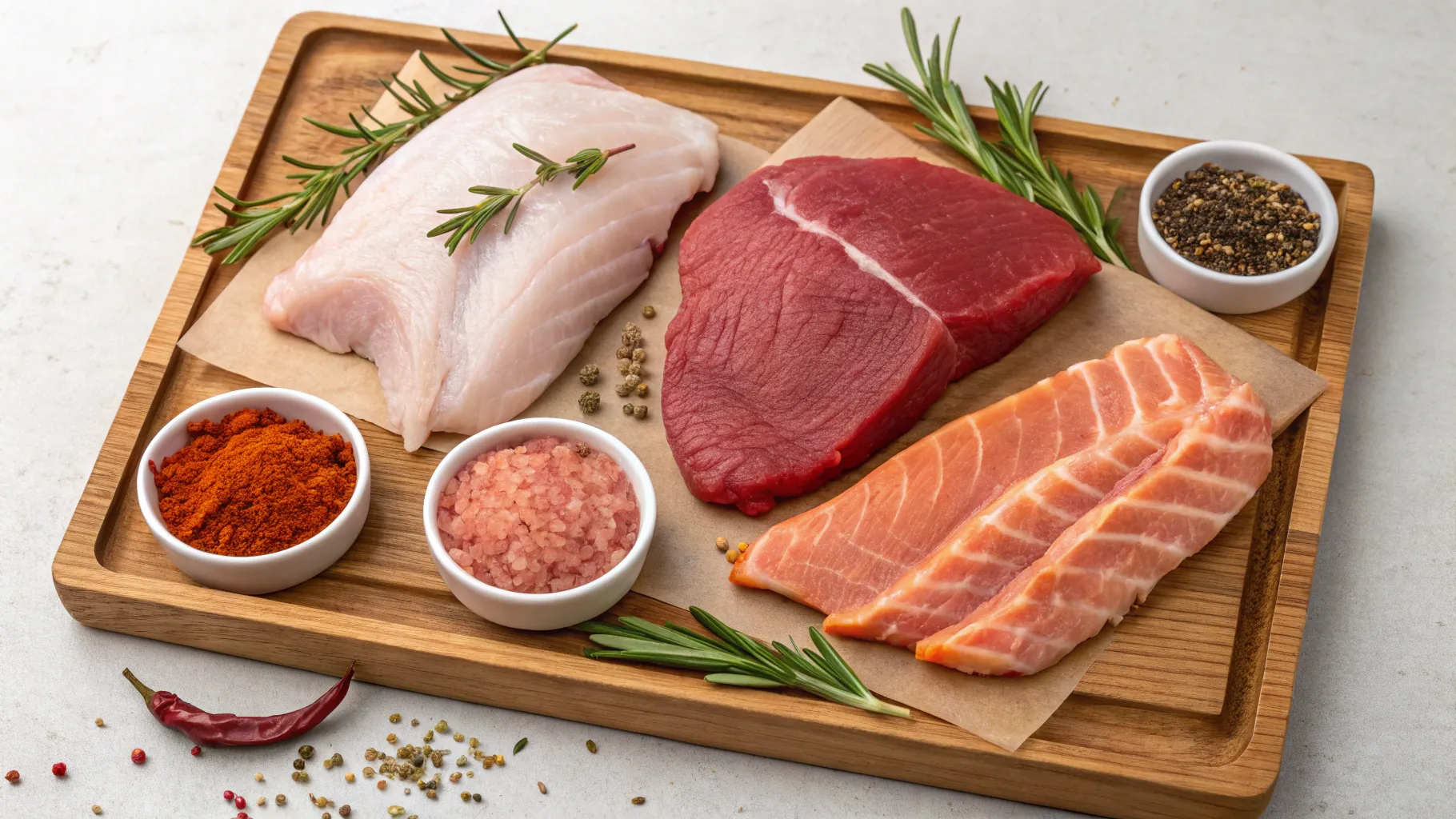
Matching Food Spices to Ingredients
Spices don’t just complement meat, they can also bring vegetables, grains, legumes, and soups to life. Whether you’re roasting veggies, simmering lentils, or preparing a grain bowl, the right spice can transform the ordinary into something extraordinary. Here’s how to match spices with common pantry staples:
1. Rice & Grains
Grains like rice, quinoa, and couscous have mild flavors that soak up spices beautifully. Adding the right food spices during cooking enhances aroma and depth.
- Turmeric: Adds a vibrant yellow color and subtle earthy flavor. Perfect in pilafs, fried rice, and Middle Eastern grain bowls.
- Cumin: Earthy and warming, it enhances the nutty flavor of quinoa, bulgur, and brown rice. Toast cumin seeds before adding for extra aroma.
- Bay Leaf: Simmer whole in the cooking liquid to infuse a savory, almost tea-like fragrance. Remove before serving.
💡 Pro tip: For instant flavor, add a pinch of turmeric and cumin to your rice water with a bay leaf, then fluff with fresh herbs after cooking.
2. Vegetables
Roasted, steamed, or sautéed, vegetables benefit greatly from the use of food spices. The right blends can enhance their natural sweetness, add smokiness, or introduce unexpected warmth, turning simple veggies into standout sides or even main dishes.
- Curry Powder: Adds a deep, spiced flavor to roasted cauliflower, potatoes, and squash. Works especially well in oven-roasted sheet pan meals.
- Garam Masala: A fragrant Indian blend that pairs beautifully with sweet vegetables like carrots, sweet potatoes, and pumpkin.
- Paprika + Garlic Powder: A simple yet powerful combination for roasted veggies like broccoli, Brussels sprouts, zucchini, or mushrooms.
💡 Pro tip: Toss chopped vegetables in olive oil, add your spice blend, then roast until caramelized and crisp on the edges.
3. Soups & Stews
Soups and stews develop deeper flavor the longer they simmer, which makes them perfect for slow-releasing spices that infuse richness and complexity.
- Thyme + Bay Leaf: Classic French-style aromatics that create a savory backbone for broths, chicken soup, and vegetable stew.
- Cumin + Coriander: Adds a warm, nutty flavor that’s especially delicious in lentil soups, split pea, or black bean stews.
- Nutmeg: A pinch of freshly grated nutmeg gives creamy soups (like butternut squash or potato leek) a subtle, comforting warmth.
💡 Pro tip: Add whole spices (like bay leaf or peppercorns) early in cooking, and ground spices mid-way for even distribution of flavor.
4. Beans & Lentils
Beans and lentils are mild but protein-packed, making them the perfect base for experimenting with food spices. The right seasonings can mimic the richness of meat or add global flair to plant-based dishes.
- Cumin: A go-to for black beans, lentils, and chickpeas. Its earthy taste enhances everything from chili to hummus.
- Smoked Paprika: Offers a deep, savory flavor with no meat required, perfect in vegetarian stews and slow cooker beans.
- Curry Spices: Indian blends like curry powder or garam masala elevate lentil dals, soups, and stews with warmth and complexity.
💡 Pro tip: Finish lentils with a splash of lemon juice or vinegar to balance the spices and brighten the dish.
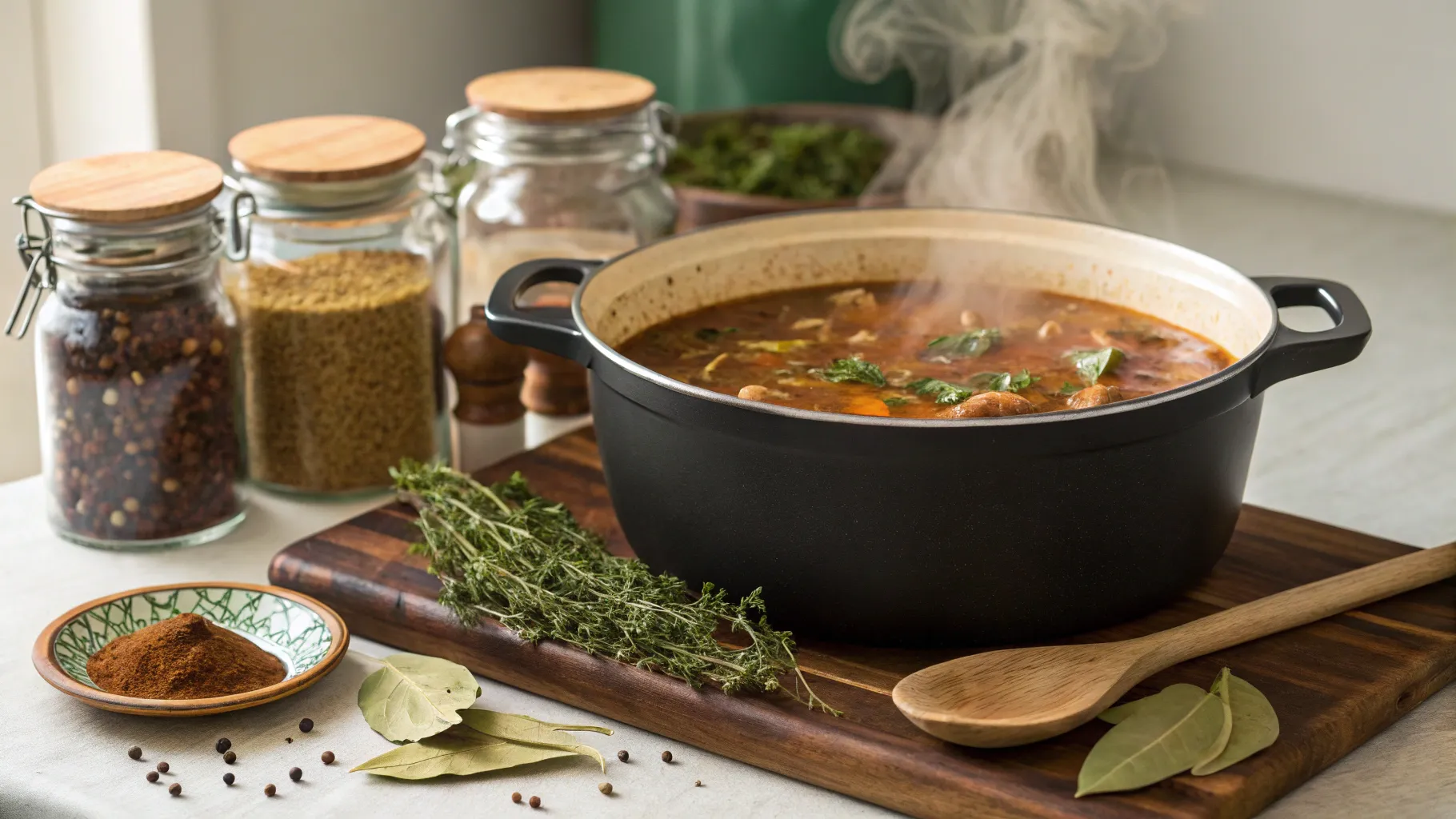
Spice Storage and Freshness
Proper storage is key to keeping your spices vibrant and aromatic. Over time, food spices lose potency, so it’s important to store them well and refresh your collection periodically.
- Keep spices in airtight containers away from heat, moisture, and light, ideally in a cabinet or drawer, not over the stove.
- Whole spices (like whole cumin or coriander seeds) last 2–4 years and maintain flavor better than pre-ground versions.
- Ground spices typically last 1–2 years. If they’ve lost their color or smell faint, it’s time to replace them.
💡 Pro tip: Buy smaller amounts more often and label your jars with the purchase date.
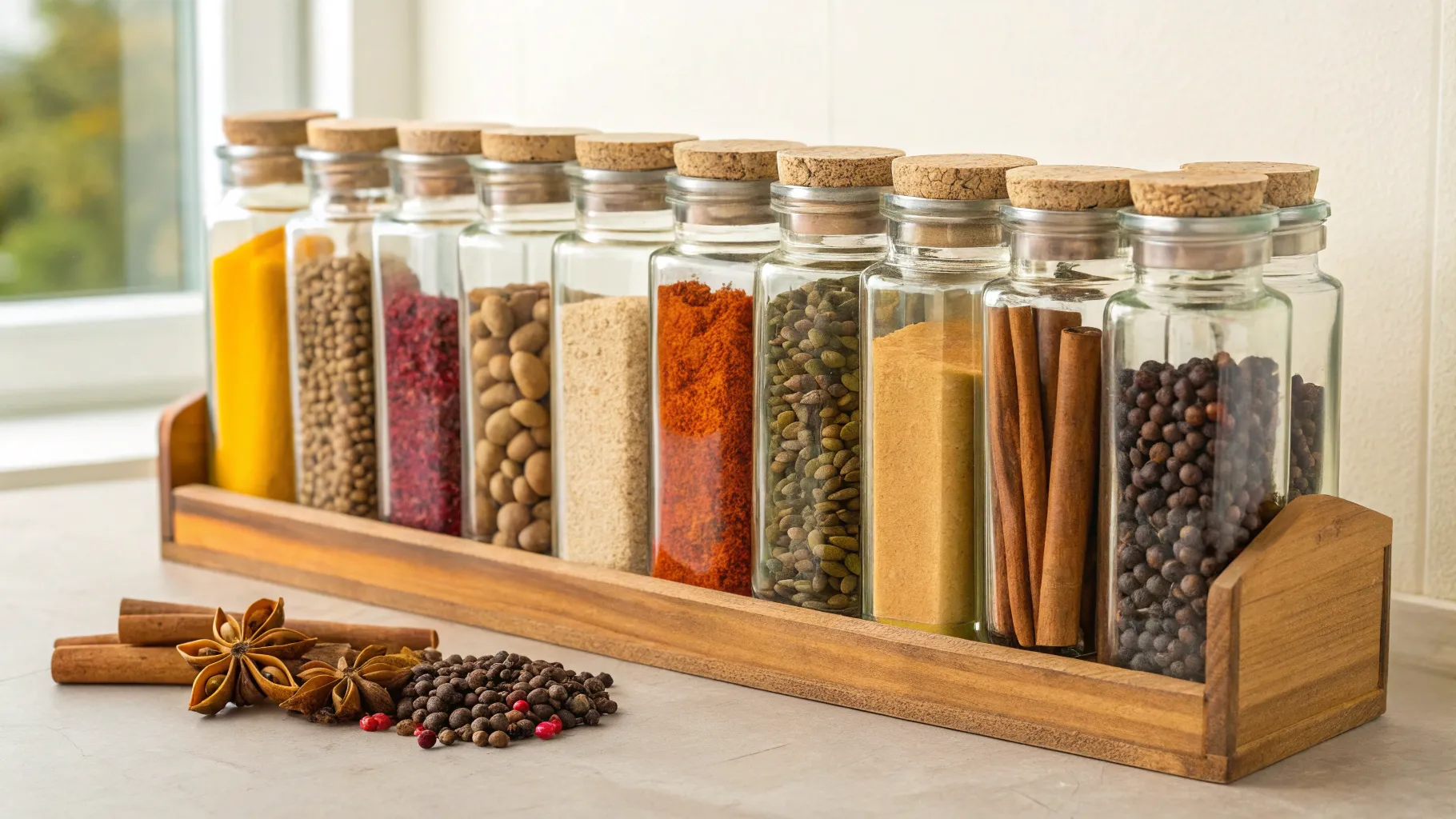
Tips for Cooking with Spices
Using food spices effectively isn’t just about sprinkling them on top, it’s about knowing how and when to unlock their full potential. Here’s how to maximize flavor:
- Bloom spices in oil: Start your dish by heating oil and adding ground spices. This releases fat-soluble compounds, boosting aroma and deepening flavor.
- Toast whole spices before grinding: Lightly toasting whole spices enhances their richness and makes homemade spice blends even more fragrant.
- Layer your spices: Add sturdy, robust spices early in the cooking process, and sprinkle delicate blends near the end to preserve their brightness and complexity.
- Taste as you go: Start small and build flavor gradually. Spices intensify with heat and time, so it’s easier to add more than to fix an overpowering dish.
Need a little extra guidance? Check out our full resource on Mastering Food Seasoning for expert tips on balancing and layering flavors like a pro!
💡 Pro Tip: Use a spice grinder or mortar and pestle to grind your own food spices, it’s a small step that can completely transform the flavor of any dish.
Final Thoughts: Building Your Spice Confidence
Food spices are your key to unlocking flavor, color, and creativity in the kitchen. Don’t be afraid to experiment, combine different regional influences, or build your own spice blends. The more you cook with spices, the more naturally you’ll know what to reach for, whether it’s cumin for your chili, cinnamon for your stew, or paprika for your roast. Spice confidently, your meals will thank you.
💡 Enjoyed this post about Food Spices?
Follow us for daily kitchen tips and tasty inspiration!
📌 Pinterest | 📘 Facebook | 📸 Instagram

